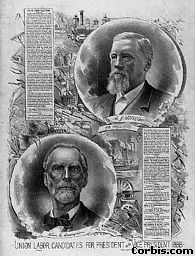Primary and Secondary Sources
What are Primary Sources? | Analysis of Primary Sources | Mindwalk Interactive Activity | What are Secondary Sources?
What are Primary Sources?
 Seattle Union Record February 3, 1919 |
Published DocumentsSome primary sources are published documents. They were created for large audiences and were distributed widely. Published documents include books, magazines, newspapers, government documents, non-government reports, literature of all kinds, advertisements, maps, pamphlets, posters, laws, and court decisions. When reviewing published documents, remember that just because something was published does not make it truthful, accurate, or reliable. Every document has a creator, and every creator has a point of view, blind spots, and biases. Also remember that even biased and opinionated sources can tell us important things about the past. |
 Poster Advertising Union Labor Candidates For President, 1888 USA www.corbis.com Image ID: IH156293 |
|
 Anna Louise Strong Journalist and labor activist Photo Courtesy of the Seattle Times |
|
For reference help, please contact Jessica Albano at
jalbano@u.washington.edu
Information adapted from:Mindwalk
Interactive Activity
Analysis of Primary Sources
What are Secondary Sources?
Last Updated 4 July 2000
The Historian's Sources: Mindwalk. Library of Congress. December 1998
http://lcweb2.loc.gov/ammem/ndlpedu/lessons/psources/mindwalk.html#quests
Library Research Using Primary Sources. Library, University of California,
Berkeley. 6/00
http://www.lib.berkeley.edu/TeachingLib/Guides/PrimarySources.html
